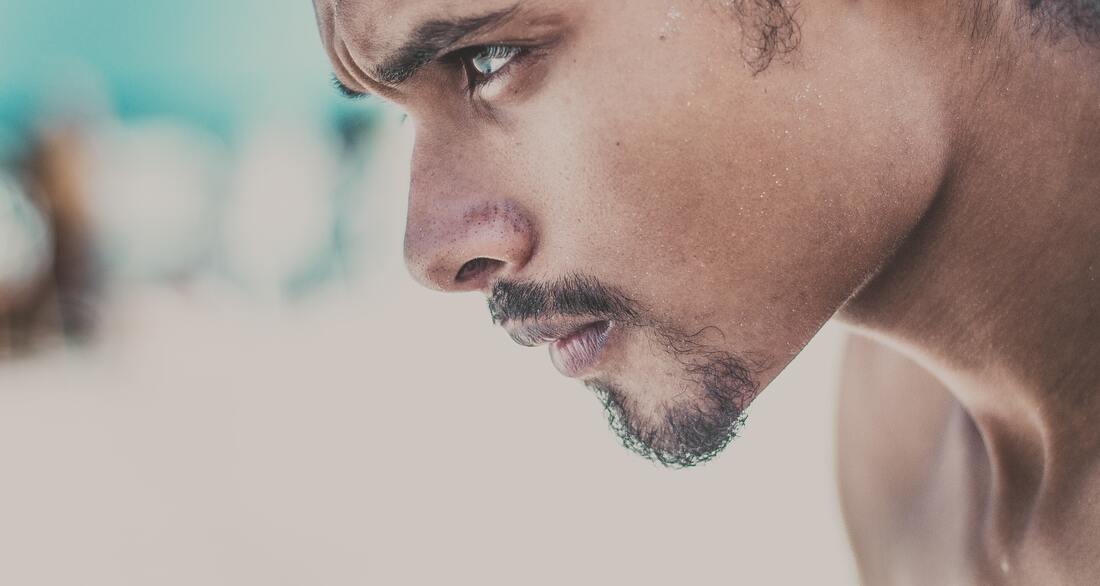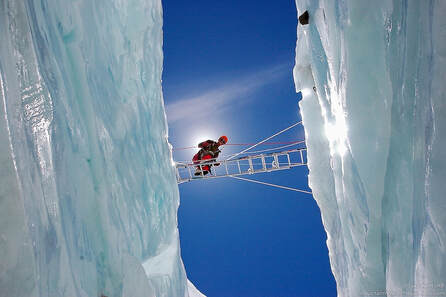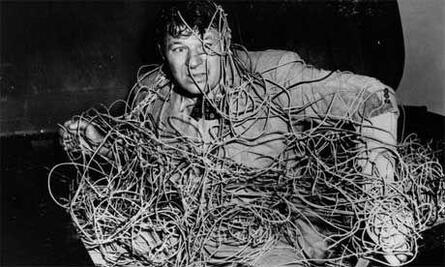|
‘Empathy is about finding echoes of another person in yourself.’ (Mohsin Hamid) I remember Deryck Sheriffs, an inspiring South African lecturer, leading a seminar on, ‘Theology and Emotion in the Psalms’. He encouraged us, as students, to consider that there’s a critical distinction between propositional truth and pastoral response. Both are important. They are often intertwined. And we need to recognise which is which when reading a text. We must pay attention to e.g. genre; context; co-text; who is speaking; nature of relationship; underlying intention. I’ve noticed parallels in all kinds of communications over the years. Confusion and tension can arise when people speak and respond in conflicting relational modes. We could broaden this principle by distinguishing between a thinking and feeling orientation. If a person speaks in feeling mode and receives a thinking-mode response (or vice versa), they may feel hurt, unheard or frustrated. Here’s an example to illustrate this point. Person 1: ‘I wish the hospital staff would speak to me directly rather than through my carers.’ Person 2 (thinking mode): ‘The staff are very busy and it’s easiest for them to speak to your carers who can then explain everything to you.’ Person 3 (feeling mode): ‘I imagine that could feel quite isolating for you. What would you like us to do?’ The latter is grounded in empathy.
10 Comments
‘The difficulty lies not so much in developing new ideas as in escaping from old ones.’ (John Maynard Keynes) Once upon a time…I would often get tens if not, on occasion, hundreds of responses to blog posts on LinkedIn. It was a thrilling experience to receive insights, ideas and experiences from people all over the world. Over time, however, the huge flood of responses gradually diminished to a tiny trickle. I felt surprised, disappointed and bemused. What had changed? I began to ask myself some searching questions: Were people bored with my content? Were fewer people using LinkedIn than before? Were fewer people engaging with posts on LinkedIn generally? I looked at which posts seemed to be getting lots of responses and noticed that they often looked more like Facebook posts: e.g. walking a dog, taking a child to school. This set me off down a different track. Had there been a shift in societies so that people were no longer interested in thinking through issues and more interested in sharing personal experiences? Had Covid lockdown and isolation shifted our focus from insights and ideas towards the social and relational, to feel less alone? Had we all slipped into a TikTok world? The problem was, I was asking the wrong questions. My starting assumption was that the critical issue was with my blog content. It led me, like Alice in Wonderland, down perplexing rabbit holes. It took a revelatory conversation with a marketing consultant, James Rowe, to discover the core issue was with my media, impacted by changes to LinkedIn algorithms. What assumptions are you making? How do you avoid getting stuck? ‘We don’t have a plane crash scheduled for today, but I thought I’d take you through the emergency procedures just in case.’ (KLM Air Hostess) I love the difference that a sense of humour can make. The air hostess (above) made everyone laugh during the passenger safety briefing on a return flight from the Netherlands today. The airline’s own plane had experienced maintenance problems so it had had to borrow one from another airline. One hostess complained, with a glint in her eye, that the green décor didn't match the blue colour of her uniform. The passengers all laughed when another hostess made an announcement too, aiming to draw our attention to an apparent information light on the plane…only to correct herself moments later with, ‘Oh – this plane doesn’t have one!’ Brilliant. It took the terror out of the turbulence. On a more serious note, I had been in the Netherlands to work with a diverse NGO leadership team, to support its desire to enhance its international teamwork. I referenced briefly a couple of places in the Bible where the writer comments on the amazing potential of human diversity – where the Divine whole is seen, known and experienced to be more than the sum of its parts – yet also hints at the corresponding dark risks of undervaluing, fragmentation and conflict if not. Strikingly, the writer moves on in both places to emphasise a deep need for authentic love as the critical success factor. This insight set a spiritual-existential tone for the day, as we reflected on team-as-relationships. Returning to the plane – but this time as a metaphor, a participant from South Africa asked, ‘How many separate parts is a Boeing 747 aircraft made up of?’ Apparently, the answer is about 6,000,000. ‘And what do these diverse components all have in common?’ Puzzled faces all round now. ‘None of them can fly.’ I thought this was genius. What a great way to dispel the myth of the all-sufficient self in the face of the dynamic complexities of teams, organisations and wider world. We worked through an Appreciative Inquiry next, drawing on positives of the past and aspirations of the present to co-create shared trust and vision for the future. Set the trajectory. Fasten seatbelts. Enjoy the flight. ‘Sometimes a language does exactly what we think it should; sometimes it goes places we don't like and thrives there in spite of all our worrying.’ (Kory Stamper) I taught English recently at a Montessori school in Germany. I was struck by the amazing level of conversational English of some of the students, and asked how it was possible that they could understand and speak so confidently and fluently at such a young age. Almost all replied that they have learned spoken English via online computer games, where they interact informally and socially with other young people from all over the world. English, for them, isn’t just another foreign language. It’s a form of linguistic currency that enables international communication, relationships, learning and fun. I find myself wondering what the impact will be over, say, 30 years of so many young people 'rubbing shoulders' with international English in this way. I won’t be around then to know the answer to the question, but I suspect that German, currently with 16 different ways to say, for instance, the English word ‘the’, will become simplified in common usage, so that speakers will start to use just one form of definite article in their own language too. We may also see conventions in other increasingly-international languages, such as Mandarin Chinese, influencing how other languages are used. What do you think? ‘How is that human systems seem so naturally to gravitate away from their humanness, so that we find ourselves constantly needing to pull them back again?’ (Jenny Cave-Jones) What a profound insight and question. How is that, in organisations, the human so often becomes alien? Images from the Terminator come to mind – an apocalyptic vision of machines that turn violently against the humans that created them. I was invited to meet with the leadership team of a non-governmental organisation (NGO) in East Africa that, in its earnest desire to ensure a positive impact in the lives of the poor, had built a bureaucratic infrastructure that, paradoxically, drained its life and resources away from the poor. The challenge and solution were to rediscover the human. I worked with a global NGO that determined to strengthen its accountability to its funders. It introduced sophisticated log frames and complex reporting mechanisms for its partners in the field, intended to ensure value for its supporters and tangible, measurable evidence of positive impact for people and communities. As an unintended consequence, field staff spent inordinate amounts of time away from their intended beneficiaries, completing forms to satisfy what felt, for them, like the insatiable demands of a machine. The challenge and solution were to rediscover the human. A high school in the UK invited me to help its leaders manage its new performance process which had run into difficulties. Its primary focus had been on policies, systems and forms – intended positively to ensure fairness and consistency – yet had left staff feeling alienated, frustrated and demoralised. We shifted the focus towards deeper spiritual-existential questions of hopes, values and agency then worked with groups to prioritise high quality and meaningful relationships and conversations over forms, meetings and procedures. The challenge and solution were to rediscover the human. Academics and managers at a university for the poor in South-East Asia had competing roles and priorities, and this had created significant tensions as well as affected adversely the learning experience of its students. The parties had attempted unsuccessfully to resolve these issues by political-structural means; jostling behind the scenes for positions of hierarchical influence and power. They invited me in and we conducted an appreciative inquiry together, focusing on shared hopes, deep values, fresh vision and a co-created future. The challenge and solution were to rediscover the human. Where have you seen or experienced a drift away from the human? Curious to discover how I can help? Get in touch! ‘If the blade is not kept sharp and bright, the law of rust will assert its claim.’ (Orison Swett Marden) ‘Clients value moments when a (coach) listens in a way that allows them to know that they are being heard, shares a relevant reflection, or asks a question that makes it possible to see an issue from a different perspective. By contrast, the hope that (coaching) might make a positive difference may be terminally undermined by selective or inattentive listening, awkward or self-serving personal disclosures or interrogative lines of questioning.’ (Julia & John McLeod, The Significance of Being Skilful, Therapy Today, BACP, November 2022). Writing in the context of counselling and therapeutic practice (which I have taken the liberty of re-applying to coaching here), McLeod and McLeod comment that practitioners often associate skills practice with training at the start of their career, rather than with an on-going development journey throughout their career. Many of the skills themselves are common to ordinary human relationships. ‘(Coaching) skills can be understood as comprising the application of generic interpersonal and communication skills for a specific purpose.’ It's as if an effective coach takes normal skills, hones them to a very high standard, then applies them intentionally and in a focused way to enable change with-for a client. A challenge lays in how to do this well, with wisdom and discernment, given that there are so many dynamically-complex factors in a client relationship and context that can fundamentally influence what the client will experience as beneficial. ‘The implementation of a skill in a real-life situation requires a capacity to improvise in response to what is happening in the moment.’ This is where on-going critical reflection and development is so important, perhaps with a supervisor or mentor or in an action learning set. ‘By creating opportunities for revisiting deeply ingrained ways of relating to others, the process of developing (coaching) skills can be both emotionally challenging and life-enhancing…(including) a capacity to maintain skilful and responsive contact with clients in situations of emotional pressure, such as the client becoming demanding, angry with the (coach) or withdrawn.’ I agree. So – how do you stay sharp? ‘Can miles truly separate you from friends? If you want to be with someone you love, aren’t you already there?’ (Richard Bach) Social distance. It’s not just physical. It’s a feeling. I meet someone close to me, albeit with a 2-metre space in between, and my instinct is to hug, to shake hands, to embrace. There’s a brief, awkward dance as we hesitate, come to a halt, hold the rule. It’s an invisible gulf that separates us, interrupts our contact, keeps us apart. After a moment, we adjust ourselves and the conversation begins to flow. Gradually...a new and different normal emerges. We find a way to bridge the gap. A smile, a gesture, an animated movement, a tone of voice. We start to feel closer again. A metaphorical touch. Perhaps it’s the same on-screen. We meet a person, a client, a colleague online and, at first, the technology forms a barrier, a boundary and a bridge between us. It feels different to being in the same physical room at the same time and we may feel that similar sense of distance, of strangeness, of desire to connect. Yet, somehow, we do it. Our intrinsic human powers of empathy, imagination and communication create their own paths of relational contact. We tune into voice, expressions, movement and surroundings. Over time, we feel each others’ presence intuitively, and the gap feels smaller. How have you handled social distance with people at work? ‘I know you think you understand what you thought I said but I'm not sure you realize that what you heard is not what I meant.’ ‘I guess I should warn you, if I turn out to be particularly clear, you’ve probably misunderstood what I said.’ (Alan Greenspan) You may have had that experience of communicating something you thought was perfectly clear, only to discover that the other person got the completely wrong end of the proverbial stick. How is that possible? Was it something in what you said or, perhaps, how you said it that influenced how the message was received, distorted or misunderstood? Whatever the cause, when it does happen, you can both feel bemused, confused or frustrated – and the consequences can be difficult, damaging or dangerous. I want to suggest this occurs mainly as a result of mismatched beliefs, values, assumptions and emotions in four critical areas: language, culture, context and relationship. There are, of course, situations in which a person may wilfully misinterpret what you said or simply choose to ignore you. However, I’m thinking more here about when it happens inadvertently and out of awareness. It’s something about what influences (a) what we infer and (b) how we interpret, when we communicate – so that we can improve it. The language question means the same words can mean different things to different people, even in the same language group. The culture question means the assumptions I make appear obvious or self-evident in the groups or teams I belong to. The context question means I interpret what you say based on my own perspective and understanding of the situation. The relationship question means I filter what you say based on what I perceive and feel about the nature, dynamics and quality of our relationship. So – this where a spirit of inquiry can help: Check what the other has heard and understood. Notice the language they use. Be curious about their cultural and contextual perspectives. Sense how they are feeling. Build trust. |
Nick WrightI'm a psychological coach, trainer and OD consultant. Curious to discover how can I help you? Get in touch! Like what you read? Simply enter your email address below to receive regular blog updates!
|











 RSS Feed
RSS Feed